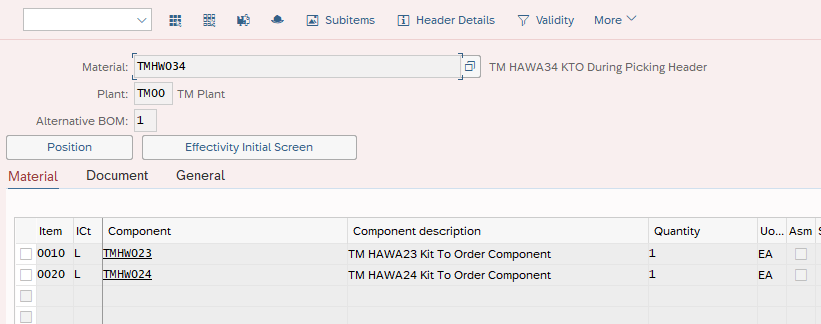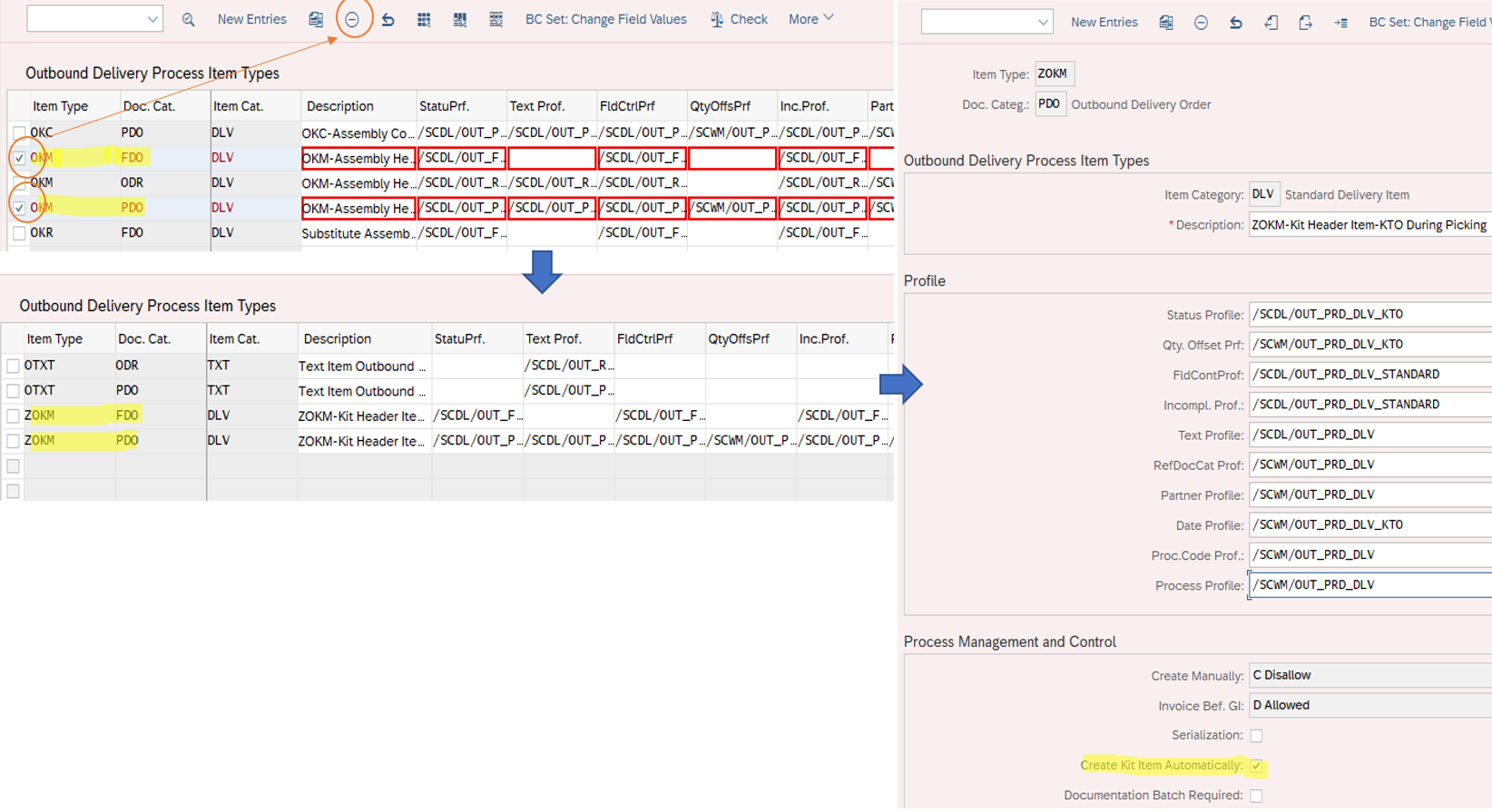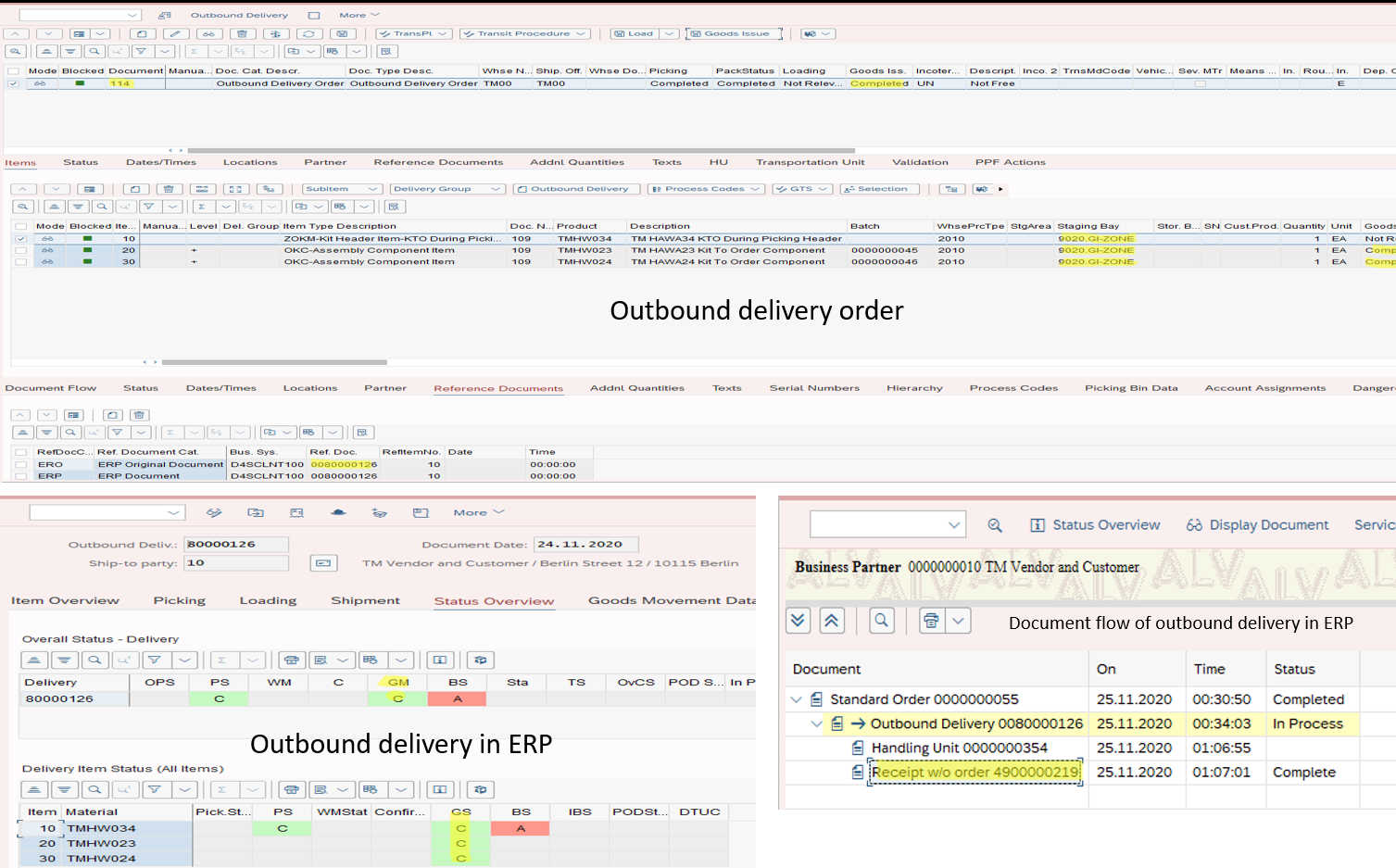Kitting is a general practice in SAP logistic. It can be done with or without EWM. This blog post is dealing “kitting with EWM”, Kits can be done for sales order or they can be done for stock. So, it basically means we can store, transfer and sell kits,
In that blog post, I would like to share one of my configuration about “Kit To Order During Picking” or "Kitting During Picking without VAS Order, so others may inspire. I will not use Process Oriented Storage Control (POSC) in my configuration.
Kit to Orden can be done in 3 different scenarios.
- Kit to Order with VAS Order at Work Center
- Kit to Order without VAS Order at Work Center
- Kitting During the Picking without VAS Order
Some important rules for kits:
- Kit prices are always calculated at the header level.
- A kit is always delivered in full to a customer.
- The kit header and kit components are always scheduled for the same date.
- All components for the kit must come from the same warehouse.
Some preliminary information:
Environment: S/4 HANA 1809 (Embedded EWM)
Required BC Sets: /SPE/KIT_TO_ORDER and /SCWM/DLV_KTO
Configuration and Other Steps for “Kitting During Picking without VAS Order”
- First let’s create materials in MM01. Item Category Group should be “KIT” in Sales: SalesOrg2 view.

2) Kit prices are calculated at the header level. So, let’s enter a in price for kit header. You can use transaction VK11 or VK14.
3) Now we can create a BOM for kit. This BOM will be for sales and distribution. So, “Usage” should be selected as “5-Sales and Distribution” in transaction CS01.

4) Let’s, check item category determination table for sales document and delivery before proceeding to further steps. You can use VOV4 and 0184 transaction codes. As you can see below, item categories will be “KITH ” and “COMP” for kit header and kit components respectively in the ERP side.

5) Let’s check details of sales item category and delivery item category of kit header (KITH) with transactions VOV7 and 0VLP. In VOV7, “Structure Scope” value is A. It means BOM will explode in the sales order.
In 0VLP, kit header is pick-relevant, As you will see in next steps, corresponding delivery item type for KITH is OKM in EWM and it is not “pick-relevant”. This can come strange at first sight but we will see how it is managed in the next steps.

6) Let’s check delivery item type mapping table in ERP-EWM interface. Delivery item types “OKM” and “OKC” will be used for kit header and kit components respectively in EWM.These item types are standard setting and they are coming from above mentioned BC Sets.
IMG>SCM Extended Warehouse Management>Extended Warehouse Management>interfaces> ERP Integration>Delivery Processing>Map Item Types from ERP System to EWM>.

One of the main prerequisites of "Kitting During Picking" is that "Create Kit Item Automatically" checkbox in the outbound delivery order item type for kit header (OKM) should be marked. So, let's check it.
IMG>SCM Extended Warehouse Management>Extended Warehouse Management>Goods Issue Process>Outbound Delivery>Define Item Types for Outbound Delivery Process>
As you see below. this checkbox is not active in OKM.Because it is standard setting and I do not want to change standard settings. That's why, I need to create new item types for PDO and FDO categories by copying from OKM. Let's name it as ZOKM.

Let's define new item type (ZOKM) as allowed item type for outbound delivery and set item type determination by copying and creating new entries.
Then, new item type (ZOKM) needs to be mapped instead of OKM in the ERP-EWM integration.
Here are paths and screenshots.
IMG>SCM Extended Warehouse Management>Extended Warehouse Management>Goods Issue Process>Outbound Delivery>Define Allowed Item Types in Outbound Delivery Process>
IMG>SCM Extended Warehouse Management>Extended Warehouse Management>Goods Issue Process>Outbound Delivery>Define Item Types Determination for Outbound Delivery Process>
IMG>SCM Extended Warehouse Management>Extended Warehouse Management>interfaces> ERP Integration>Delivery Processing>Map Item Types from ERP System to EWM>.

ADDITIONAL INFORMATION: When we check content of above mentioned BC Sets (/SPE/KIT_TO_ORDER and /SCWM/DLV_KTO) in SCPR3 transaction, we will see outbound delivery item category in ERP is mentioned differently in both of them. In one of them, it is "COMP", and in other one, it is "KOMP". So please add an entry like "LF+COMP=>OKC" to ERP-EWM item type mapping table.

7) Let’s check Goods Movement Type for Kit Header. As you can see below screenshot, it is 521 for kit header. This movement type will be used to post kind of “dummy” good receipt record for kit header during the GI.
IMG>Logistics Execution >Service Parts Management (SPM)>Outbound Process (SPM) > Kit to Order>Set Goods Receipt Movement Type for Kit Headers

8) Kit header item type (ZOKM) and kit component item type (OKC) will use 2010 warehouse process type in EWM.
IMG>SCM Extended Warehouse Management>Extended Warehouse Management>Cross-Process Settings>Warehouse Task>Determine Warehouse Process Type
Let’s test our configuration.
- Let’s create a sale order and outbound delivery in ERP and check outbound delivery order in EWM.Then we will create warehouse tasks. As you can see below, one warehouse order with two warehouse tasks are created for kit components.

2) Let’s confirm warehouse order in /SCWM/TO_CONF transaction. We have to confirm warehouse order with Pick HU. As you can see in below screenshot, storage bin for Pick HU is selected as staging bay of 2010. In my case it is “9020.GI-ZONE”. After confirmation of warehouse order, kit will be generated automatically on the Pick HU in "9020.GI-ZONE" bin.

3) Anymore, we can post goods issue in the outbound delivery order and check GI status in EWM and ERP. As you can see below, GI status are “Completed” in both side. Please take a note of material document which you can find in “document flow” of ERP outbound delivery.

4) Let’s check material document in MIGO. There are two lines for kit header in the material document. First one is goods receipt with movement type 521 and second one is goods issue with 601 for kit header. First one is kind of “dummy” record for kid header.

This is end of my blog post. I hope it will be useful.
Off course, many other configuration setup can be done for “Kitting During the Picking”. This is just a simple configuration example.
If you would like to add-up or give any comment, Please do not hesitate.
Thanks to author Tufan Mengus
